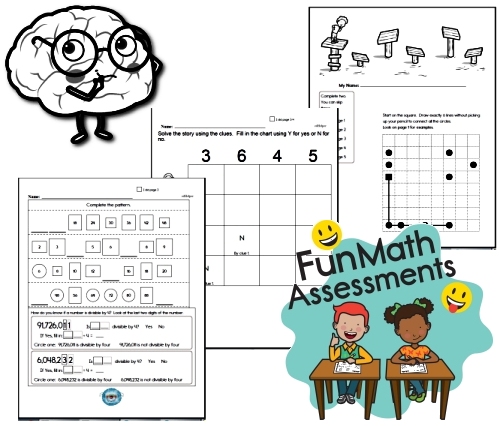Critical Thinking and Meaningful Assessment
By: edHelper Staff
Updated: Mar 19, 2021

Deep Thinking and getting beyond "I Googled It!"
When Google was first introduced to the world back in 1998, it was a premier search engine. Now, however, the word "Google" is not only a noun but also a verb. Looking for a great lesson plan? Google it. Hoping to find a tasty, easy-to-make recipe with just the ingredients in the fridge? Google it. Don't know an answer? Google it.
But what if we want students to do more than just Google an unknown answer? What if we want them to think deeply about a concept, question, or idea without using a search engine to spit out a copiable response? If you're hoping to help your students think critically during distance learning, the following tips may help!
Model the Process
This may seem overly simplistic, but students have a tendency to imitate what they see. Need proof? How often do you see middle school students awkwardly performing a dance they saw on TikTok while wandering the aisles of the grocery store? Students are masters at imitating. Use this to your advantage! When covering a new topic or being asked questions that you may not know all the answers to (we know this rarely happens because teachers know everything!), model the best way to think through the solution. Let your students see and hear you wrestling to come to a place of understanding.
Math Assessment
Google-Proof Your Assignments
When creating or revising assignments, consider increasing the DOK level of the questions being asked, and vary the types of desired responses. A few quality questions that require students to think deeply may be more valuable than a slew of lower-order questions they can easily Google, answer, and submit. Consider implementing the following types of questions for a variety of assessment purposes. Each will lend itself to more critical thinking during distance learning.
#1 - Summary: Ask students to summarize, which will require students to think through what they've learned up to a certain point in the lesson and then briefly restate it in their own words. This is a great way to take info recall to the next level.
#2 - Relational: Ask students to make connections between the concepts being studied. When applicable, ask students to identify connections between class and the real world as well. Identifying these types of connections is personal. Answers will vary from student to student. Google can't help here!
#3 - Challenge: Follow up assignments with challenge questions. Allow students to submit initial answers to an assignment for partial credit. Then, based on their responses, ask for additional elaboration and clarity. The second set of responses, the set where students have to dig deep to defend their answers, justifies their thinking, or elaborate is then graded for additional points.
#4 - Cause and Effect: Challenge your students to identify cause-and-effect implications for different ideas, solutions, and actions being covered. Looking beyond the "what" of a situation and identifying the longer-lasting impact.
Alternative Ways to Answer
One of the perks of distance learning has been the opportunity to introduce students to alternative assignment options that, in the past, may not have felt like a feasible option. The idea of assigning video creation or digital homework seemed like a long shot in the long-ago years (or last year) of in-person instruction. Now, however, there are great tech-savvy formative assessment options, and they all require critical thinking and answers that Google alone can't provide.
#1 - Video Response: Asking your students to respond using a video program like Otus or Flipgrid gives students a choice and a voice. When using one of these programs to submit answers to questions or creatively respond to a prompt, you create an opportunity for reflection and deeper understanding.
#2 - Discussion Boards: One of the things teachers report missing the most during distance learning is student discourse. Discussion boards and well-crafted prompts are a great way to not only have your students respond to your questions but also respond to one another. While students needing direction may be able to start their quest for answers with an online search, ultimately, they will have to take that surface-level knowledge and transform it into meaningful responses.
#3 - Small Group Projects: Use breakout rooms to your advantage during this season of online learning. By creating collaborative projects and providing time during your synchronous and asynchronous instruction, students can work together to demonstrate their understanding and elaborate on their thinking. Group projects can be effective when structured well. In order to help ensure equitable participation, consider assigning roles to each member of the group. If you opt to keep the same groups for multiple projects, you may want to have students rotate roles.
Make a Map
Concept maps allow students to organize their learning and identify relationships between concepts. These maps help students by retrieving, elaborating, and organizing their understanding of the content. Mind maps are fantastic self-assessment tools for students to identify gaps in their learning at a quick glance. Rather than assigning traditional assessments, consider making mind maps to help students tap into higher-order thinking.
Our goal as educators is not to simply prepare our students to answer questions on a test or master a set of standards. Our goal is to support our students as they learn to think critically, make decisions, and grow! Simple and easy-to-implement changes to the way you currently ask for answers and assess understanding will help Google-proof your assignments and create an environment for students to continue to excel in and out of your classroom and in life!












